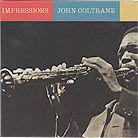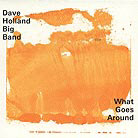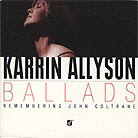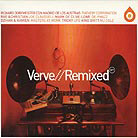

Digital Source: Ensemble Dirondo [on loan from Jules Coleman]; Teac Esoteric SACD/CD player
Analog Source: Rega P2/Grado Prestige Gold cartridge
Preamp: Shindo Monbrison, Atma-Sphere MP-3 [on review loan]
Amps: BAT VK-75; Atma-Sphere MA1 Silver Edition monos [in for review]
Speakers: Proac Response 2.5, Duevel Venus [on loan for current review]
Cables: Primary - Omega Mikro Planar A-VII interconnects (CD to Pre), Omega Mikro Planar IV Silver LCX speaker cables and jumpers, Nordost Quattro Fil interconnects (Pre to Amp); Secondary - Cardas Golden Reference interconnects
Stands: Salamander 5.0 rack, Mapleshade platforms, cone points and isoblocks.
Power line conditioning: BPT Model BP-3.5 Signature Ultra Isolator, JPS Kaptovator and Omega Mikro Planar I and III power cords, Shunyata Black Mamba and Anaconda Vx Powersnakes
Sundry accessories: Ceiling treated with 8 x RPG ProFoam damping panels, Mapleshade HeavyFoot cone points under speakers
Room size: 24' x 12' with 10-13' sloped ceiling, short-wall setup
Review Component Retail: $3,395
I well remember my first piece of "high end" audio gear. The year was 1973
and I had just purchased a small integrated amplifier from a local
Lafayette dealer, a chain of electronics stores that existed throughout
the Southeast and maybe elsewhere for all I knew. This particular
franchise was located upstairs from a lingerie shop that featured flesh
and blood females modeling their slinky wares behind a glass storefront
exposed to passing automobile traffic. Talk about car wrecks! Anyway, I
was more interested in hi-fi at the time and made a hasty return home to
unwrap my new prize. The Lafayette was about 15 watts per channel, with
volume, balance and dual tone controls. Round back were tiny screws for
speaker connections and not much more. Its fake wood grain finish was
certainly cheesy, but hey, I was in the high end world now!
Integrated amps made sense to me for some time. KEF, Yamaha and Audiolab units followed until years later I finally broke the piggy bank for my first Cary separates. Tube electronics from Cary, Atma-Sphere and BAT filled the house and I've never looked back.
Okay, get on with it.
I relate this rather boring and self-serving tale to ultimately pose a question. Who in
these days of tiny-tot SET monoblocks and behemoth mega-powered glow-bombs
manufactured by companies with diverse levels of expertise and design is
the prospective buyer for a $4000 German-made, zero feedback, solid state
integrated amplifier? 4k will buy you better than average separates that
will more than hold their resale value. And while I understand purchasing
an integrated amp when space is a factor or if one is perhaps nostalgic
for a certain sound of his or her youth, what is the appeal?

Germany's Duevel produces exceptional omni-directional speakers and
the Shuttle integrated is their first foray into the amplification jungle.
The 70wpc channel Shuttle may be meant for Duevel owners already enamored
of the house sound, or those interested in hearing what else designer
Markus Duevel has up his sleeve. This beaudaciously attractive unit would
seemingly be tailormade for Duevel speakers as it was most likely designed
with the Bella Luna, Jupiter and Venus models in mind (the latter of which
I had on hand for this review). But who else did Markus Duevel consider
when designing the Shuttle?
I posed these questions and more to Duevel importer Ted Lindblad of HighEndAudio.com who
set me straight pronto.
Ted speaks.
"Duevel wants to build its own line of solid state
electronics and the Shuttle is their first offering. It can be used with
any speakers but does work very well with Duevel omnis. Markus Duevel
wanted to provide people with something that didn't cost a fortune,
sounded really good and also played records coz they still play a lot of
records in Europe. There are plenty of popular integrated amplifiers
around like the VAC Avatar and the 47Labs Shigaraki, and for 4000 bucks,
the Shuttle competes very well. If you want a small system, this is the
way to go."
Ken speaks back.
$4000 is still a considerable sum of money where I come from.
Though I favor tube separates, I admit that a high-quality solid state
integrated amp with MM/MC phono capability could be just the ticket for
certain demanding audio denizens. Purchasing an integrated amp eliminates
the need for an extra set of interconnects - point #1.

The Shuttle is exceptionally well built. Heck, the thing is
overbuilt, a tank in the truest sense of the word, weighing in at a hefty
28.6 pounds and wrapped in a handsome metal case with one of the most
gorgeous faceplates I have seen on any piece of audio gear regardless of
price. An exquisitely machined slab of clear ½" Plexiglas with groovy
rounded corners, the faceplate holds two giant round selector knobs to the
far right of the unit, one for volume, the other for phono/CD/tape/
tuner/aux sources. The selector dials are so massive and rotate so
smoothly, it feels as though you were operating the controls on a sleek
German submarine (and we ain't talking das boot). Round back are two rows
of standard issue RCAs for input/output duties and metal posts outfitted
with finger-friendly, heavy-duty plastic nubbies for attaching speaker
wires. Power rating is 70w into 8 ohms (a good comparison match for my
70wpc BAT VK-75 tube amp) and 110w into 4 ohms. The on/off switch controls
the standby mode so the amp is basically warmed up
24/7.
I shall now take
the easy way out and quote the Duevel website for additional
information.
"All electronics, including RCA phono sockets, input selector and volume control, are
placed on a single double-sided circuit board, the result of which is our ability
to use fewer parts and hook-up wire in the signal path. The state of the
art MM/MC phono stage is placed on a separate circuit board. Digital
inputs include one specially designed with optional 800-ohm load to best
accommodate the typical output impedance characteristics of digital
sources marketed today. The result is an integrated amplifier with the
extraordinary ability to offer the listener a simple and dramatic
component, damped on a wood and rubber base, which we challenge you to
identify as tube or solid state."

Is solid state the domain of the devil, church lady?
Okay, we accept
that challenge! I consider most solid state gear the domain of
Lucifer and his fallen angels but just this once, I opened the door to
said demons (after considerable prayer me brothers), with the caveat that
these solid-state horror angels prepare themselves for redemption at the
base of my Tungsol-Mullard-Telefunken altar. Either way, the Shuttle's
wood and rubber base is sure to produce a better overall sound than your
average, non-damped metal base with standard (useless)
feet.
Ted Lindblad was kind enough to lend me a pair of $3,395/pr Duevel Venus speakers to
evaluate the Shuttle's perfor-mance but first up, I put the amp through
its paces with my resident Proac Response 2.5s. Although this review is
not a showcase for the Venus speakers, it must be said that they are
remarkably proficient. Open-sounding with striking resolution particularly
in the upper midrange and treble, the Venus creates a tactile, airy
pathway into the music that comes at you from all sides like an audio
tidal wave. Clear, extremely extended, tonally solid yet entirely
free-of-the-box, the Duevel Venus are the opposite of conventional
closed-box systems yet lack the ultimate bass slam if not musicality a
sealed enclosure affords.
 In honor of the recent passing of Jazz drumming genius Elvin Jones, I began my mission by
playing several CD cuts from tenor saxophone giant John Coltrane with whom
Elvin made some of his more profound contributions. Listening to the drum
solo tour de force "The Drum Thing", it was easy to understand why Duevel
markets the Shuttle with the "We defy you to tell if it's tube or solid
state" schtick 'cause on this track from 1964's Crescent, the
Shuttle sounded flattering and ferocious, exhibiting the kind of
holographic imaging you associate with tubes. Along with tonal warmth came
a bold presentation and deadly rhythmic accuracy.
In honor of the recent passing of Jazz drumming genius Elvin Jones, I began my mission by
playing several CD cuts from tenor saxophone giant John Coltrane with whom
Elvin made some of his more profound contributions. Listening to the drum
solo tour de force "The Drum Thing", it was easy to understand why Duevel
markets the Shuttle with the "We defy you to tell if it's tube or solid
state" schtick 'cause on this track from 1964's Crescent, the
Shuttle sounded flattering and ferocious, exhibiting the kind of
holographic imaging you associate with tubes. Along with tonal warmth came
a bold presentation and deadly rhythmic accuracy.
Through the Proacs, the Shuttle was not as liquid or as transparent
as my three-times-the-price Shindo/BAT pre/power combination but that was
to be expected. What I did not expect was how powerful and deep the
Shuttle's bass performance would be. It matched my reference rig in that
regard. And while this was solid state bass, it never rocked the house
with that car-bumper-to-the-brain thud appeal some love about solid state.
No, this was fat and juicy, with excellent bloom and a blueish glow if you
catch my drift. Soundstaging was decent if not spectacular, the Shuttle
really blossoming in the lower-midrange-to-bass areas rather than up on
top where the birds sing their hallelujahs.
 Playing Dave
Holland Big Band's What Goes Around [ECM 1777 440 014 002-2], the
Shuttle laid down the bass master's instrument with a great ripe tone and
a long reach, sounding as dense and woody as I have heard it. The Shuttle
is a serious bass king champ. It made tom toms speak with authority and
slam and the bari sax of Gary Smulyan growl with a bear-like roar.
Cymbals, on the other hand, sounded more chingey and defined rather than
flowing and resonant though the Shuttle's ample detail quickly allowed me
to discern when drummer Billy Kilson changed ride cymbals. At louder
volumes, the Shuttle's upper frequencies were now certainly solid
state-like. Stacked horn lines had spit and spark but not as much body and
weight as with my macho tube rig. But what do you expect, fool? The
Shuttle did keep the pace with swift dynamics, speed, power and overall
musicality.
Playing Dave
Holland Big Band's What Goes Around [ECM 1777 440 014 002-2], the
Shuttle laid down the bass master's instrument with a great ripe tone and
a long reach, sounding as dense and woody as I have heard it. The Shuttle
is a serious bass king champ. It made tom toms speak with authority and
slam and the bari sax of Gary Smulyan growl with a bear-like roar.
Cymbals, on the other hand, sounded more chingey and defined rather than
flowing and resonant though the Shuttle's ample detail quickly allowed me
to discern when drummer Billy Kilson changed ride cymbals. At louder
volumes, the Shuttle's upper frequencies were now certainly solid
state-like. Stacked horn lines had spit and spark but not as much body and
weight as with my macho tube rig. But what do you expect, fool? The
Shuttle did keep the pace with swift dynamics, speed, power and overall
musicality.
 For a little
vocal appeasement, I dropped in singer Karen Allyson's Ballads
Remembering John Coltrane [Concord CCD-4950-2]. Possessing a sweet
smooth voice that is mature beyond her 20-something years, Allyson
deserves much wider recognition that she's getting amid the sexy diva
nation of the Norah Jones/Diana Krall experience. But such is the
marketplace of ideas in modern America. Ballads is an all-Coltrane
affair with an excellent supporting cast including Lewis Nash, James
Carter, Bob Berg and James Williams. Its fidelity is as superb as many
other discs from Concord (their SACD catalog is one of the best). Opening
track "Say It (Over and Over Again)" was originally recorded for
Coltrane's own Ballads and Allyson does the song great justice with
her flowing lines, sensual swing and honeyed
delivery.
For a little
vocal appeasement, I dropped in singer Karen Allyson's Ballads
Remembering John Coltrane [Concord CCD-4950-2]. Possessing a sweet
smooth voice that is mature beyond her 20-something years, Allyson
deserves much wider recognition that she's getting amid the sexy diva
nation of the Norah Jones/Diana Krall experience. But such is the
marketplace of ideas in modern America. Ballads is an all-Coltrane
affair with an excellent supporting cast including Lewis Nash, James
Carter, Bob Berg and James Williams. Its fidelity is as superb as many
other discs from Concord (their SACD catalog is one of the best). Opening
track "Say It (Over and Over Again)" was originally recorded for
Coltrane's own Ballads and Allyson does the song great justice with
her flowing lines, sensual swing and honeyed
delivery.
Again,
bass response was as thrilling and robust as through my usual rig. The
overall presentation of the music was also similar though the midrange was
slightly dry, like a good cheap bottle of Italian red. Ambience retrieval
was good, every shimmer of the brushes and cymbals and every small echo of
Allyson's voice upfront and apparent. The Shuttle's sound was neither
recessed nor intensely immediate but unflatteringly middle-of-the-road.
Tonally, it was all about lower midrange and bass physicality, seeming to
slightly close up in the treble. That impression remained even at louder
volumes.

Shiver me, Shuttle me, Timbers are Breathing,
Belulah!
At this stage,
the Shuttle was doing an excellent job of kicking out the bass with the
best of them, with solid soundstaging, decent tonal neutrality (with a
wink and nod to the nether regions) and a speedy top end that was not as
transparent as I am accustomed to but surely meets the competition in the
4k range. On to the Duevel Venus speakers.
Aha! So there
is something to the idea of system synergy after all. The
Shuttle/Venus combo upped the ante and then some. Playing Allyson's disc
again, her voice became much rounder, human and fleshed out, with a
greater sense of dynamics and intimacy. Now I could hear her breathe.
Saxophone tone also improved immensely, as did brush flutters, piano
comping - everything was more fleshed out, pungent and passionate than
through the Proacs. Every vocal inflection was richly defined.
Soundstaging improved dramatically via the Venus pairing, most likely due
to their 360-degree tweeter dispersion. Here was a match made in hi-fi
heaven. The slight trade off was in the bass region, the upright
instrument now sounding more diffuse if no less deep, rich and
weighty.
The Holland disc
only confirmed the Shuttle/Venus duo's winning ways. The sound was not as
zingy overall as before but more lush and dynamic. The perpetual horn
band's big shout section now sounded like an Assemblies of God holy-roller
blowout, not a restrained, hold-the-passion Lutheran sing-a-long. Cymbals
had more body and air, soundstaging was vastly improved and big band
crescendos now exhibited all the daring thrust and 16-men power of an old
fashioned turf- war at midnight. This music sounded
alive.

For kicks I
dropped in Verve Remixed [Verve 314 589 606-2] and the party really
got started. A compilation of Verve's famed catalog remixed by some of the
most irreverent and talented DJs around, Verve Remixed revels in
rock'em/sock'em electronic bass and all manner of stellar inter- and outer
space productions. Richard Dorfmeister's remix of Willie Bobo's "Spanish
Grease" sent me reeling with deep growling techno bass nearly coming
through the floor while twinkling keyboards extended far beyond the
speakers. Harmonic color and rhythmic agility were spewed out in spades,
the house was truly rockin' so don't bother knockin'.

Did I prefer the
Shuttle with the Venus speakers? You betcha. Would I disqualify the
Shuttle from working equally well with other, less exotic speakers? Nope.
Remember, we are talking 4k here, a lot of money for sure, but I cannot
imagine that you would get this kind of bold in-your-face exhilaration and
truly fantastic bass performance from many other amps in a similar price
range. Cables are also a factor to consider. My Omega Mikro and Nordost
cables are renowned for their speed and clarity but they can be too much
of a good thing in the wrong system. It's all about synergy after all. I
would not be surprised that if I had used my Cardas Golden Reference
interconnects with the Proacs, I might have obtained similar if not quite
as spectacular results as I did with the Venus
match.
I cannot compare the Shuttle to other integrated amps since I didn't have
one on hand. That the Shuttle competes at all with Shindo/BAT gear is
quite an accomplishment wherever you drop the hammer. So yes, I had a
blast with the Shuttle. Its tremendous bass weight made the savage in me
dance a midnight conga line jig, and its speed and rhythmic aplomb had me
rethinking the solid state vs. tube conundrum. Well, almost. The Shuttle
delighted in a big and bold delivery that became more pronounced as I
poured on the juice, but it also performed well at low volume levels with
no loss of fine detail.
Did the Shuttle
do everything like a champ? No. Its treble never got close to the
luscious, creamy, transparent sound of my rig, nor did it lick its
bootstraps in terms of treble weight, midrange bloom and a certain human
quality, the feeling of flesh and fire and love and passion. Solid state
still sounds mechanical to me compared to the best tube gear. But the
Shuttle got in the ball park, especially with its demon grip on bass
maneuvers.

The Shuttle pulled similar tricks with its phono stage. Some well-heeled Moonies will no doubt laugh at my meager Rega P2/Grado Prestige setup, but hey, I got no room for LPs in my Manhattan shoebox apartment anyway, so shad up yer face.
Henry Mancini's soundtrack to Blake Edwards' Experiment in Terror [Columbia LPM/LSP-2242] is a classic '60s LP with romantic instrumentation and memorable melodies. I'll take Mancini over Bacharach any day of the week. The Shuttle did a decent job of pulling everything out of this tattered old LP, though the sound was a bit one-dimensional. Edmund Rios and Orchestra's Arriba [London Phase 4 SP 44080] fared much better. I could honestly hear little difference between this and the CDs I had just played, except that the treble was more open, sparkling and natural. Bass execution was as good as before if a bit smaller in actual size and weight. But guitars, shakers, congas and strings were to die for - juicy, clean and full-bodied.
The Shuttle's phono stage was clearly its most human-sounding resource. Hey, vinyl is a blast on this thing! I have a penchant for 6'0s singers: Jack Jones' The Impossible Dream [Kapp KS-3486] had me crooning along. The Shuttle sounded different with different discs. The Jones LP sounded dynamically flat but nicely detailed, with ample bass and a smoooooth midrange. John Coltrane and Johnny Hartman [Impulse GR-157] were swimming in bass but by this time, I could tell my li'l Rega was falling short of what the Shuttle ultimately had to offer. Still, I was having fun revisiting LPs I had not heard in some time. The Shuttle's flat frequency response (flatter than CD) made it all happen.

Conclusion.
The Duevel Shuttle Non-Feedback Integrated Amplifier does many things extremely well. Its bass extension will give amps triple its price a serious comeuppance, its soundstaging is first rate. I also found the Shuttle to be dynamically more powerful than its rated 70wpc would have suggested. It loved the boogie, nightlife and pounding pulse of hot audio sex and dance music depth charges. But it could also play it quiet and sweet if you had the right speaker to charm its solid-state heart. The Shuttle should certainly be on your must-hear integrated list, and with just a little luck, perhaps importer Ted Lindblad will work out a listening session for you. Get down on it, shuffle over to Lindblad's and check out the Shuttle.


